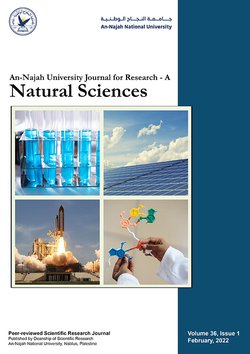Potential Biocontrol Agents on Nutsedges
Authors:
Article info
1999-08-16
2000-08-14
2000-08-14
83 - 103
Keywords
Abstract
PurpIe and yellow nutsedges are agriculturally important weeds. They have an adverse effect against a large number of cultivated crops under both protected and open field conditions. In this research, one phytophagous insect (Bactra sp., Tortricidae Lepidopterra) and two phytopathogenic fungi (Alternaria gloeosporioides) were found to be naturally infecting these weeds. After a successful rearing of the insect and isolation of the fungi, certain studies on the efficacy of both insect and fungi against the purple nutsedge were conducted. Detailed description of adult insect and its immature stages was provided for the first time. Results obtained on mean duration of different immature stages of the insect were: 3.5, 14.3, and 8.7 days for egg, larval and pupal stages, respectively. Therefore, duration of life cycle averaged 26.5 days at 20±tlCo. Longevity of adult insect was 12.3 days, and femal fecundity was 72.8 eggs per female during the life span. Biological effect of insect moth against the weed was shown by following the insect development inside the plan until reaching the rhizome and penetrating it. Results obtained on efficacy assessement procedures indicated that the percent of plant weed mortality was 73.1 % due to the insect attack, 25.69% and 36.84% due to inoculation with culture discs and conidial suspension of Colletotrichum gloeosporioides, respectively. This mortality occured in the above cases after penetration of the bioagent in plant rhizome. Infection of detach weed leaf pieces or rhizomes with three fungal strains of Alternaria alternata. or with one fungal strain of Colletotrichum gloeosporioides resulted in the following mean length of disease lesion: 8.1, 6.6, 5.6, and 15.8 mm, respectively for the above strains. Significant differences between these mean lengths were obtained. Further studies especially under field conditions, are recommended to be conducted to assure the efficacy of the insect and the fungal strains against the weed since their effectiveness under controlled conditions was clearly proved in this study.
Batta, Y. (2000). Potential Biocontrol Agents on Nutsedges. An-Najah University Journal for Research - A (Natural Sciences), 14(1), 83–103. https://doi.org/10.35552/anujr.a.14.1.682
[1]Y. Batta, “Potential Biocontrol Agents on Nutsedges,” An-Najah University Journal for Research - A (Natural Sciences), vol. 14, no. 1, pp. 83–103, Jan. 2000, doi: 10.35552/anujr.a.14.1.682.
Batta, Yacoub. “Potential Biocontrol Agents on Nutsedges.” An-Najah University Journal for Research - A (Natural Sciences), vol. 14, no. 1, Jan. 2000, pp. 83–103. Crossref, https://doi.org/10.35552/anujr.a.14.1.682.
1.Batta Y. Potential Biocontrol Agents on Nutsedges. An-Najah University Journal for Research - A (Natural Sciences) [Internet]. 2000 Jan;14(1):83–103. Available from: http://dx.doi.org/10.35552/anujr.a.14.1.682
Batta, Yacoub. “Potential Biocontrol Agents on Nutsedges.” An-Najah University Journal for Research - A (Natural Sciences) 14, no. 1 (January 2000): 83–103. https://doi.org/10.35552/anujr.a.14.1.682.
Potential Biocontrol Agents on Nutsedges
المؤلفون:
معلومات المقال
1999-08-16
2000-08-14
2000-08-14
83 - 103
الكلمات الإفتتاحية
الملخص
PurpIe and yellow nutsedges are agriculturally important weeds. They have an adverse effect against a large number of cultivated crops under both protected and open field conditions. In this research, one phytophagous insect (Bactra sp., Tortricidae Lepidopterra) and two phytopathogenic fungi (Alternaria gloeosporioides) were found to be naturally infecting these weeds. After a successful rearing of the insect and isolation of the fungi, certain studies on the efficacy of both insect and fungi against the purple nutsedge were conducted. Detailed description of adult insect and its immature stages was provided for the first time. Results obtained on mean duration of different immature stages of the insect were: 3.5, 14.3, and 8.7 days for egg, larval and pupal stages, respectively. Therefore, duration of life cycle averaged 26.5 days at 20±tlCo. Longevity of adult insect was 12.3 days, and femal fecundity was 72.8 eggs per female during the life span. Biological effect of insect moth against the weed was shown by following the insect development inside the plan until reaching the rhizome and penetrating it. Results obtained on efficacy assessement procedures indicated that the percent of plant weed mortality was 73.1 % due to the insect attack, 25.69% and 36.84% due to inoculation with culture discs and conidial suspension of Colletotrichum gloeosporioides, respectively. This mortality occured in the above cases after penetration of the bioagent in plant rhizome. Infection of detach weed leaf pieces or rhizomes with three fungal strains of Alternaria alternata. or with one fungal strain of Colletotrichum gloeosporioides resulted in the following mean length of disease lesion: 8.1, 6.6, 5.6, and 15.8 mm, respectively for the above strains. Significant differences between these mean lengths were obtained. Further studies especially under field conditions, are recommended to be conducted to assure the efficacy of the insect and the fungal strains against the weed since their effectiveness under controlled conditions was clearly proved in this study.
Batta, Y. (2000). Potential Biocontrol Agents on Nutsedges. An-Najah University Journal for Research - A (Natural Sciences), 14(1), 83–103. https://doi.org/10.35552/anujr.a.14.1.682
[1]Y. Batta, “Potential Biocontrol Agents on Nutsedges,” An-Najah University Journal for Research - A (Natural Sciences), vol. 14, no. 1, pp. 83–103, Jan. 2000, doi: 10.35552/anujr.a.14.1.682.
Batta, Yacoub. “Potential Biocontrol Agents on Nutsedges.” An-Najah University Journal for Research - A (Natural Sciences), vol. 14, no. 1, Jan. 2000, pp. 83–103. Crossref, https://doi.org/10.35552/anujr.a.14.1.682.
1.Batta Y. Potential Biocontrol Agents on Nutsedges. An-Najah University Journal for Research - A (Natural Sciences) [Internet]. 2000 Jan;14(1):83–103. Available from: http://dx.doi.org/10.35552/anujr.a.14.1.682
Batta, Yacoub. “Potential Biocontrol Agents on Nutsedges.” An-Najah University Journal for Research - A (Natural Sciences) 14, no. 1 (January 2000): 83–103. https://doi.org/10.35552/anujr.a.14.1.682.
An-Najah National University
Nablus, Palestine
Nablus, Palestine
- P.O. Box
- 7, 707
- Fax
- (970)(9)2345982
- Tel.
- (970)(9)2345560
- (970)(9)2345113/5/6/7-Ext. 2628
- [email protected]
- EIC
- Prof. Ismail Warad
An-Najah University Journal for Research - A (Natural Sciences) by An-Najah University, Nablus, Palestine is licensed under CC BY-NC 4.0
